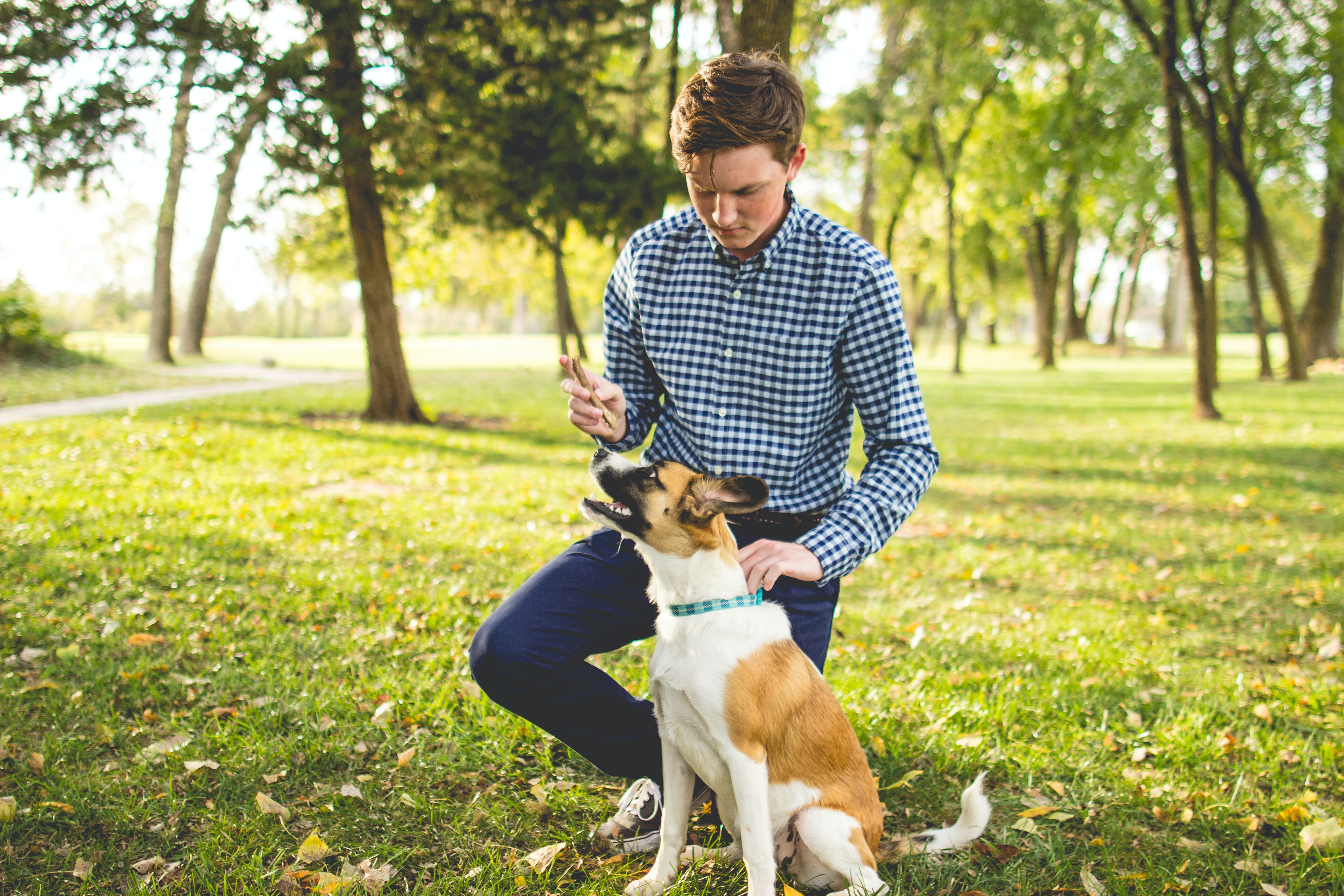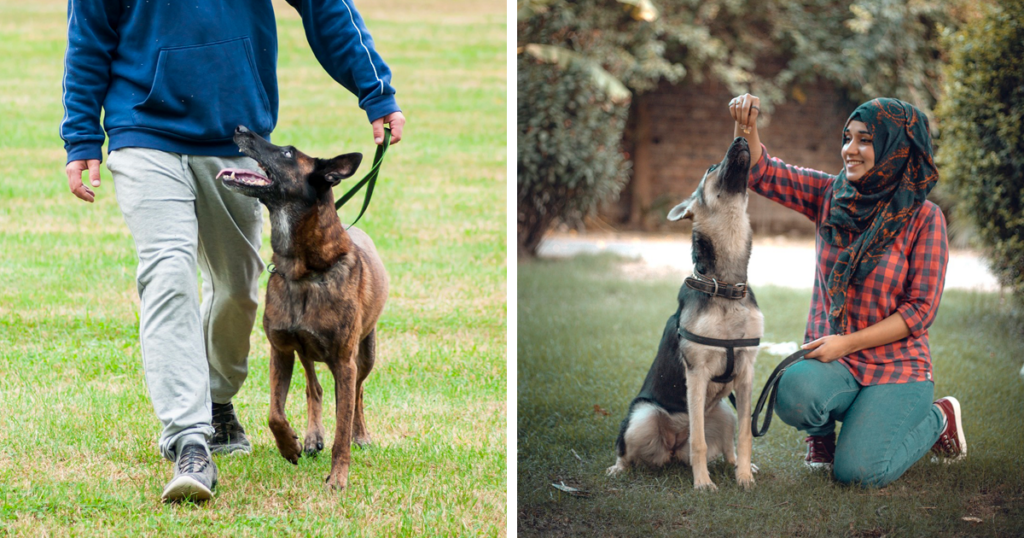Log In
or
Sign Up
or
Reset your password
Enter your email address or username and we’ll send you a link to reset your password
Check your inbox
An email with a link to reset your password was sent to the email address associated with your account
Provide email
Please enter your email to complete registration
Activate to continue
Your account isn’t active yet. We’ve emailed you an activation link. Please check your inbox and click the link to activate your account
The Bored Panda iOS app is live! Fight boredom with iPhones and iPads here.
6
0
Link copied!
Share
Link copied!
Share
Adding a new dog to the family is amazing! But it can get expensive real quick. Part of being a responsible dog owner means training your pup. Regardless of your furry friend’s age and stage, every dog can benefit from training. In this article, we review the types of dog training, the cost, and what to expect from each option.
The information provided herein is for informational purposes only. Please refer to our disclaimer for more details..
Image credits: Zach Lucero.
So you just got a puppy or adopted a new dog and you’re ready to start training him. But how many training sessions will your dog need?
Each dog is unique and should be treated as such. There is no one set amount of training for all dogs. Some dogs require more training than others. For example, a dog suffering from fear-based aggression will likely require more training than a dog needing basic obedience.
There are many behaviors you can train your dog in and each behavior requires a different amount of training. Examples include basic commands, crate training, house training, leash training, and more.
In addition to basic obedience, training classes help with a dog’s socialization skills, which are necessary for a dog to be well-adjusted in a variety of scenarios with other dogs and people.
Standard training programs offered at places like Petco and PetSmart typically consist of 6 sessions over 6 weeks. However, these types of classes usually have a limited scope since they are aimed at socialization and teaching basic commands. Therefore, if your dog needs more advanced training for a behavioral issue, he will likely need more sessions over time.
Unfortunately, many dog owners don’t complete the training courses they enroll in or never attend training at all. Although some dogs may learn and respond faster than others, it is still ideal for owners to complete the training courses they enroll in. Successful completion of training courses is crucial in promoting owner education and reducing behavioral problems in dogs.
Like us, dogs are lifelong learners. This means obedience and training must be positively reinforced throughout a dog’s life. We should not assume that training is complete just because a certain number of training sessions are attended.
Behavioral issues are one of the leading causes of euthanasia and rehoming. This is why training is an important and worthy investment. But how much can you expect to spend on dog training? It depends on the type of training, the facility or trainer, and how much training your dog needs.
Additionally, location is a factor since the cost of training will depend on the cost of living in the city you reside in.
So let’s look at the estimated cost for different types of dog training.
Private training sessions consist of a trainer working one-on-one with you and your dog. These individualized lessons usually take place in your home or at a training facility. This type of training allows you to customize the type of skills and behaviors you want to work on.
In these sessions, you can teach agility or advanced commands as well as address behavioral issues like excessive barking or separation anxiety. Private classes are a great alternative to group training if your canine companion is working on aggression. It’s also a desirable option for owners looking for more flexibility with scheduling training sessions.
Private training generally costs anywhere between $75 to $250 per hour. The cost of private dog training is highly variable based on the trainer’s expertise level and the type of skills you’re looking to teach your dog.
Image credits: JenRegnier.
Group dog training is offered as public classes of about 5 to 10 dogs. These group sessions are usually held once a week at a training facility or park. Unlike private training, group training has a set list of skills to be covered in the course.
There are different types of group training classes designed for different goals such as basic puppy training, intermediate obedience, advanced obedience, and nose work (aka scent work). Group training serves as an excellent opportunity for socializing and getting your dog accustomed to different people and other dogs.
Compared to private dog training, group training is certainly more affordable. A basic weekly 6-session course at Petco or PetSmart is approximately $150. However, obedience schools may charge slightly more.
Board and train programs are like doggy training boot camps. Owners typically drop off their dogs at a training facility for two weeks or so, leaving all the work up to the trainer. While this may seem like an easy option for busy owners, board and train does not guarantee a perfectly well-trained or well-behaved dog at the end of his stay.
The problem with board and train is that the owner is not involved in the training process. Training is as important for you as the owner as it is for your dog. A significant part of dog training is owner education about how to encourage good behavior, which is why board and train is problematic and not necessarily a quick fix.
Not all board and train facilities are created equal. If you do choose to use a board and train program, make sure the facility is safe and that the trainer does not use aversive techniques or punishment.
Prices for board and train programs range from $500 to upwards of $1250 per week. This option is more expensive because of the cost of housing your dog.
Image credits: Cookie the Pom.
Virtual online classes are a great option for owners with busy schedules. These classes allow you the comfort and convenience of training from home. Training from home may be particularly appropriate when you are trying to crate train or house train your pup since she will be in her regular environment.
Online dog training classes are offered as group classes or private lessons. Although online classes may be a great resource, one drawback of online classes is the lack of socialization with other dogs.
On average, a weekly 4-session package for 30-minute group online classes runs about $130 whereas a single 45-minute private session may be about $90.
Dog training isn’t cheap. But why is the cost of dog training so high?
When you pay for dog training, you’re essentially paying for the use of training equipment but more importantly, the expertise and guidance of a professional trainer. Depending on the training method you choose, you may also have to factor in the cost of the training facility. You’re paying for training tools and knowledge that can be used for the entire life of your pet.
Dog training is also expensive because of the liability and potential injuries that can occur, especially in high-risk cases such as with aggressive dogs.
It is important to note the difference between service dogs, therapy dogs, and emotional support dogs. Therapy dogs are meant to support or comfort people in schools, hospitals, nursing homes, and other similar settings.
Emotional support animals are animals approved by psychiatrists to alleviate symptoms associated with psychiatric conditions such as depression, anxiety, or loneliness. The main thing here is that therapy dogs and emotional support dogs are not service dogs.
Under the ADA (Americans with Disabilities Act), service dogs are any breed and size of dog that are “trained to perform a task directly related to a person’s disability.” These dogs can be trained to help with a large range of disabilities including post-traumatic stress disorder, autism, vision impairment, seizures, and hearing impairment.
Service dogs are trained to perform specialized tasks and are, therefore, quite expensive. Examples of such tasks are retrieving objects for a person, reminding them to take their medication, alerting them of an impending panic attack, or detecting the onset of a seizure.
Learning to perform such specialized tasks takes a great deal of training. This is why adopting a service dog can cost between $10,000 to $30,000 or sometimes up to $50,000 in certain cases. This cost includes service dog training as well as care for the dog until the time of adoption.
Some people opt to adopt an untrained dog and hire a professional dog trainer. Because professional training can run $150 to $250 per hour, this option ends up about the same with an average cost of $10,000 to $30,000.
Whether you’re training your dog for basic commands, service dog training, crate training, or a behavioral issue, remember to use positive reinforcement and make it fun! Clicker training, treats, and toys are great ways to positively reinforce desired behaviors and skills. Training your dog takes time and effort on behalf of the whole family but is a necessary and rewarding part of owning a dog.
Anyone can write on Bored Panda. Start writing!
Follow Bored Panda on Google News!
Follow us on Flipboard.com/@boredpanda!
124views
6
0
6
0
Link copied!
Share
Link copied!
Share
Author, Community member
After completing my Doctor of Veterinary Medicine degree at Colorado State University, I pursued further training through a one-year small animal rotating internship at Texas A&M University. My expertise primarily revolves around dogs and cats, although I also have a passion for exotic species such as rabbits and native Hawaiian birds. When I’m not providing care for animals or spending quality time with my two adopted dogs, I enjoy indulging in my hobbies of hip-hop and ballet dancing.
Author, Community member
After completing my Doctor of Veterinary Medicine degree at Colorado State University, I pursued further training through a one-year small animal rotating internship at Texas A&M University. My expertise primarily revolves around dogs and cats, although I also have a passion for exotic species such as rabbits and native Hawaiian birds. When I’m not providing care for animals or spending quality time with my two adopted dogs, I enjoy indulging in my hobbies of hip-hop and ballet dancing. 
We’re also on Instagram and tumblr
2comments 34 points
13comments 16 points
1comment 29 points
0comments 20 points
2comments 16 points
11comments 48 points
4comments 34 points
6comments 38 points
3replies 18 points
5comments 22 points
© 2024 Bored Panda

